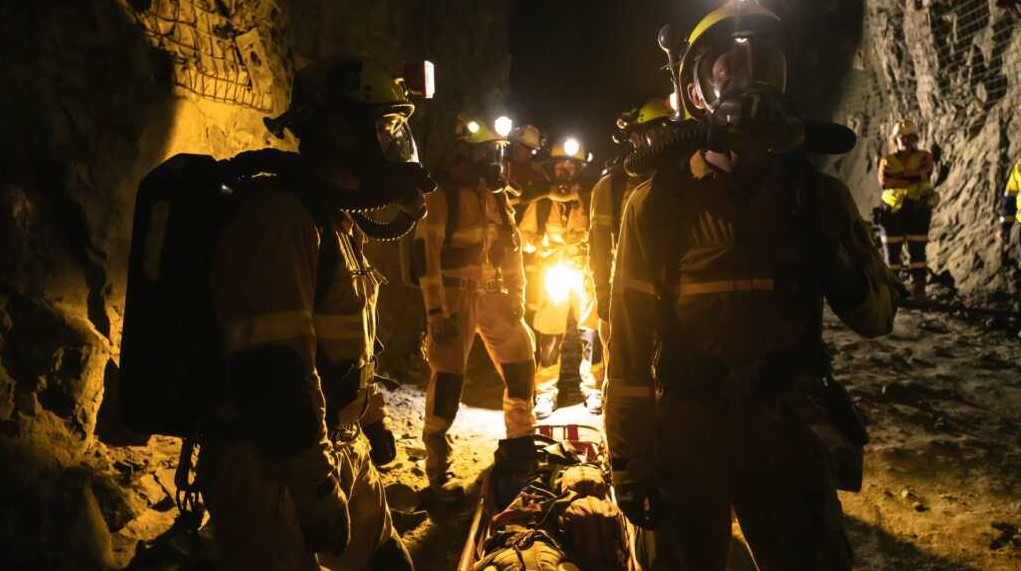In high-risk environments, where the air becomes a blend of peril, the difference between life and death often hinges on access to a breathable atmosphere. Portable air cylinders, a cornerstone of emergency escape strategies, have proven their worth time and again. This article delves into several case studies where these devices were not just equipment, but lifelines, drawing out the lessons learned and the best practices that emerged.
The Mine Rescue: A Breath in the Dark
In 2010, a collapse trapped 33 miners deep within a Chilean mine. The portable air cylinders, designed with carbon fiber composite technology, became their hope in the suffocating darkness. Over the 69 days before their rescue, these cylinders were crucial for providing the miners with clean air, especially in the initial stages when ventilation systems were compromised. This incident underscores the importance of robust, lightweight cylinders that can be easily transported and used in confined spaces.
Lesson Learned: Regular drills and familiarity with safety equipment can drastically improve the chances of survival in such extreme conditions.
Best Practice: Incorporating portable air cylinders as part of the standard equipment in mining operations and ensuring their accessibility throughout the mine.
The Submarine Escape: Surfacing Against Odds
The dramatic escape of the crew from a sunken Russian submarine in 2005 highlights another critical application. With limited oxygen, the crew relied on portable air cylinders to make the perilous ascent to the surface. The high-pressure carbon fiber cylinders allowed for a compact size that could be managed even in the cramped confines of a submarine.
Lesson Learned: The need for equipment that can withstand extreme pressure differences and harsh environments without compromising safety.
Best Practice: Training submariners in the use of portable air cylinders for escape procedures and ensuring that these lifesaving tools are integrated into escape suits.
The High-rise Fire: Ascending to Safety
In a 2017 skyscraper fire in Dubai, portable air cylinders facilitated the safe evacuation of residents above the fire zone. Firefighters used these cylinders to assist residents in breathing as they were guided through smoke-filled corridors. The lightweight design enabled rescuers to carry extra cylinders, extending their operation time within the building.
Lesson Learned: In urban high-rise fires, the speed at which individuals can be equipped with breathing apparatus can be crucial for avoiding smoke inhalation.
Best Practice: Strategic placement of portable air cylinders at multiple locations within high-rise buildings, accompanied by clear signage and regular tenant training on their use.
Industrial Chemical Spill: Containment with Caution
An industrial accident in 2019 involving a hazardous chemical spill in a manufacturing plant called for an immediate evacuation. Workers equipped with portable air cylinders were able to safely exit the premises without inhaling toxic fumes. The incident demonstrated the need for air cylinders that can be quickly deployed and worn in conjunction with other protective gear.
Lesson Learned: Immediate access to portable air cylinders can prevent inhalation injuries during chemical spills.
Best Practice: Regularly conducting hazard-specific drills that include the use of portable air cylinders and personal protective equipment (PPE).
Wildfire Smoke: A Barrier to Breathing
During the California wildfires in 2018, emergency responders utilized portable air cylinders to navigate through dense smoke while combating the flames and facilitating evacuations. The cylinders enabled them to breathe in conditions that were otherwise unsurvivable, highlighting the need for equipment that can deliver a reliable supply of air in the heat of the moment.
Lesson Learned: The adaptability of emergency equipment to different types of air quality hazards, such as smoke from wildfires, is crucial for effective response efforts.
Best Practice: Equipping all emergency response units with portable air cylinders that are specifically designed for high-temperature environments.
Conclusion: The Lifeline in a Breath
These case studies illuminate the undeniable value of portable air cylinders in safeguarding lives across a spectrum of emergency scenarios. From the depths of the earth to the heart of industrial complexes, these devices provide a critical supply of breathable air, embodying hope and survival. The lessons learned and best practices identified from these incidents emphasize the importance of preparedness, innovation, and the relentless pursuit of safety in the design and use of portable air cylinders.
Post time: Feb-21-2024

